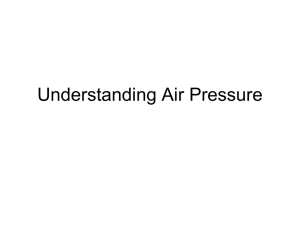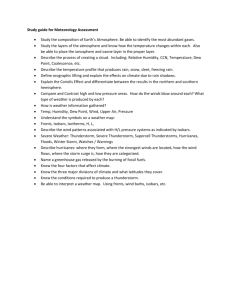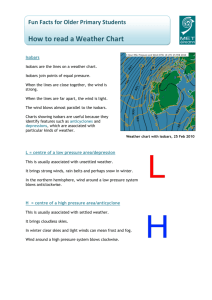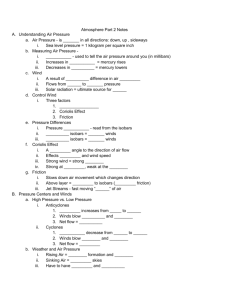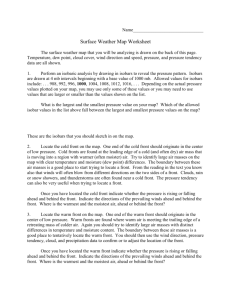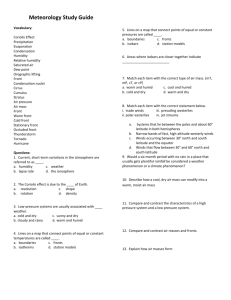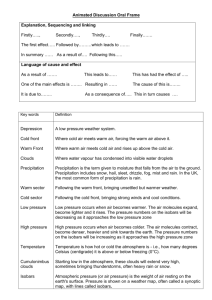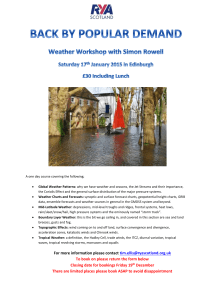Exercise 2.6 reading weather maps
advertisement
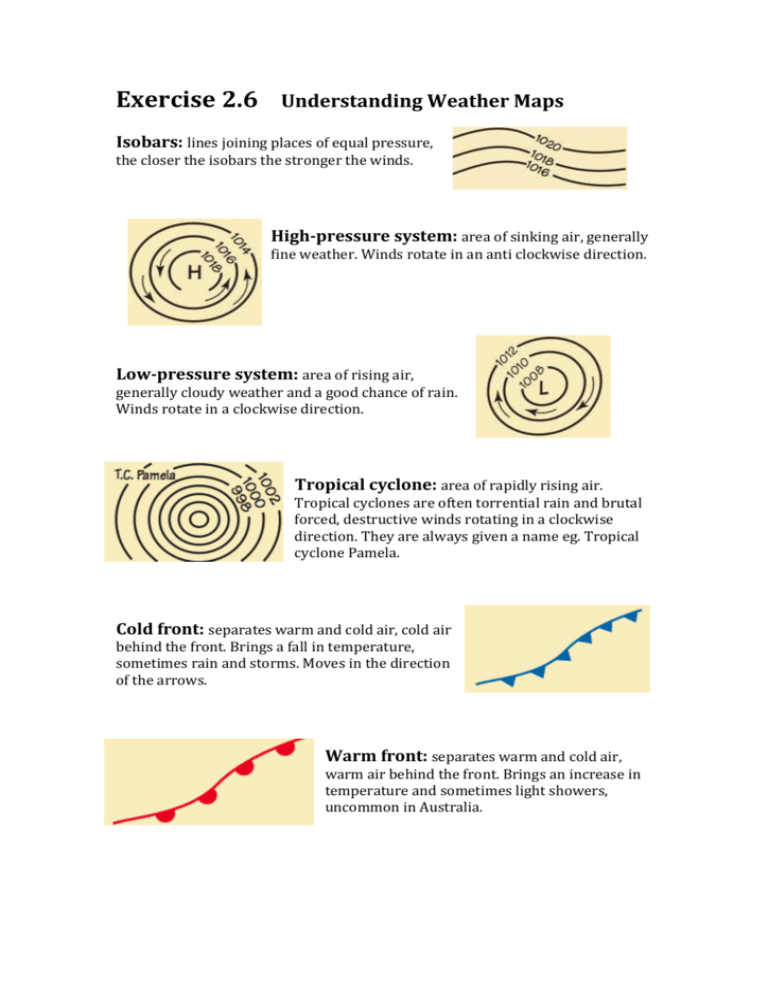
Exercise 2.6 Understanding Weather Maps Isobars: lines joining places of equal pressure, the closer the isobars the stronger the winds. High-pressure system: area of sinking air, generally fine weather. Winds rotate in an anti clockwise direction. Low-pressure system: area of rising air, generally cloudy weather and a good chance of rain. Winds rotate in a clockwise direction. Tropical cyclone: area of rapidly rising air. Tropical cyclones are often torrential rain and brutal forced, destructive winds rotating in a clockwise direction. They are always given a name eg. Tropical cyclone Pamela. Cold front: separates warm and cold air, cold air behind the front. Brings a fall in temperature, sometimes rain and storms. Moves in the direction of the arrows. Warm front: separates warm and cold air, warm air behind the front. Brings an increase in temperature and sometimes light showers, uncommon in Australia. QUESTIONS Q1. What is another name for a weather map? Synoptic chart Q2. List three differences between a high and low-pressure system High pressure= air sinking, rotating anticlockwise, generally fine weather Low pressure= air rising, rotating clockwise, generally cloudy weather Q3. What does a weather map indicate when… a. Isobars are close together? Strong winds b. Isobars are far apart? Hardly windy
